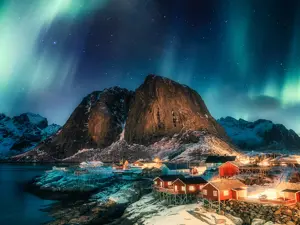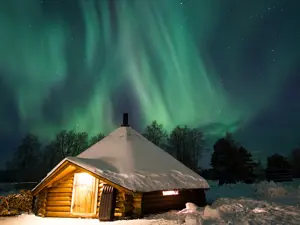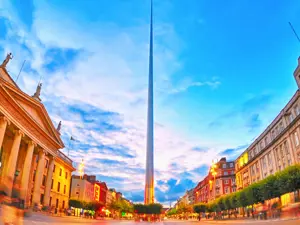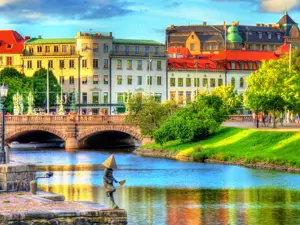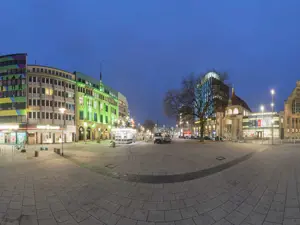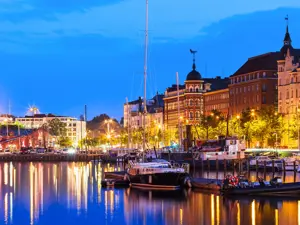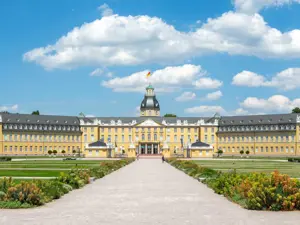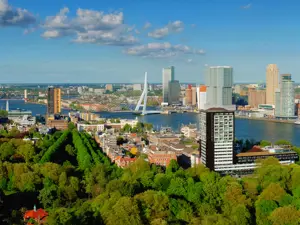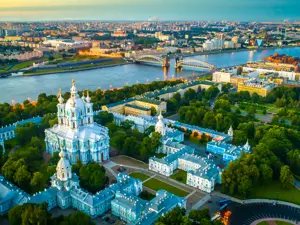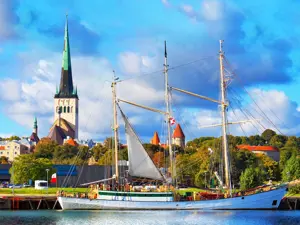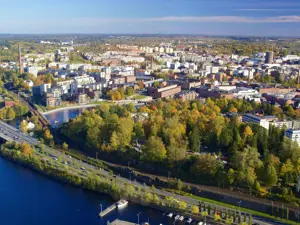The creative and lively city, on the shores of the North Sea amidst the Norwegian fjords
Stavanger is one of Norway's oldest cities and offers a captivating blend for a journey steeped in culture, history, art, good food, and natural beauty. The vibrant town has a small city center, easily explored on foot. Strolling through the old city area, Gamle Stavanger, amidst historic cobblestone streets, one experiences a mix of modernity and ancient history with art coming to life in the distinctive Street Art and the characteristic wooden houses that are among the best-preserved in Europe.

Stavanger. Photo: Copyright © Sisterscom.com / Depositphotos
The small area west of the harbor, called Old Stavanger, represents Stavanger's wooden city with 173 buildings from the early 18th century, mostly small white cottages. Stavanger's wooden city extends beyond just the old town and comprises approximately 8,000 houses in various styles: from Empire to Art Nouveau and Functionalism, with wooden residences largely originating from the city's settlements before World War II when houses were constructed of wood for easy disassembly and relocation.

Old Stavanger. Photo: Copyright © Sisterscom.com / Depositphotos
A short walk from the harbor stands Stavanger Cathedral in Medieval style, still in use since the 1300s, although its origins presumably date back to 1125 when it was built by Bishop Reinald of Winchester, later damaged by fire. The pulpit was crafted by Andrew Smith in 1650, while the stained glass windows are by Victor Sparre and date back to 1957.

Stavanger Cathedral. Photo: Copyright © Sisterscom.com / Depositphotos
In Stavanger's old town, open-air art is admired in the Nuart Street Art, where over 15 years of Nuart Festival's Street Art history are uncovered, showcasing the evolution of Stavanger as one of the world's leading destinations for Street Art. Art ranges from situationism, graffiti, post-graffiti, muralism, comic culture, stencil art, or activism with major works by Fintan Magee, Snik, Milu Correch, AFK, Skurk, and Martin Whatson, among others.

Nuart street art festival Photo: Credits: Terje Rakke/Nordic Life 2011 Copyright: Region Stavanger BA
To continue an artistic journey, visitors to the old town can explore several museums: the Stavanger Maritime Museum and the IDDIS Norwegian Graphic Museum & Norwegian Canning Museum (the Norwegian Canning Museum, to see how smoked sardines were produced and exported worldwide in the early 19th century).
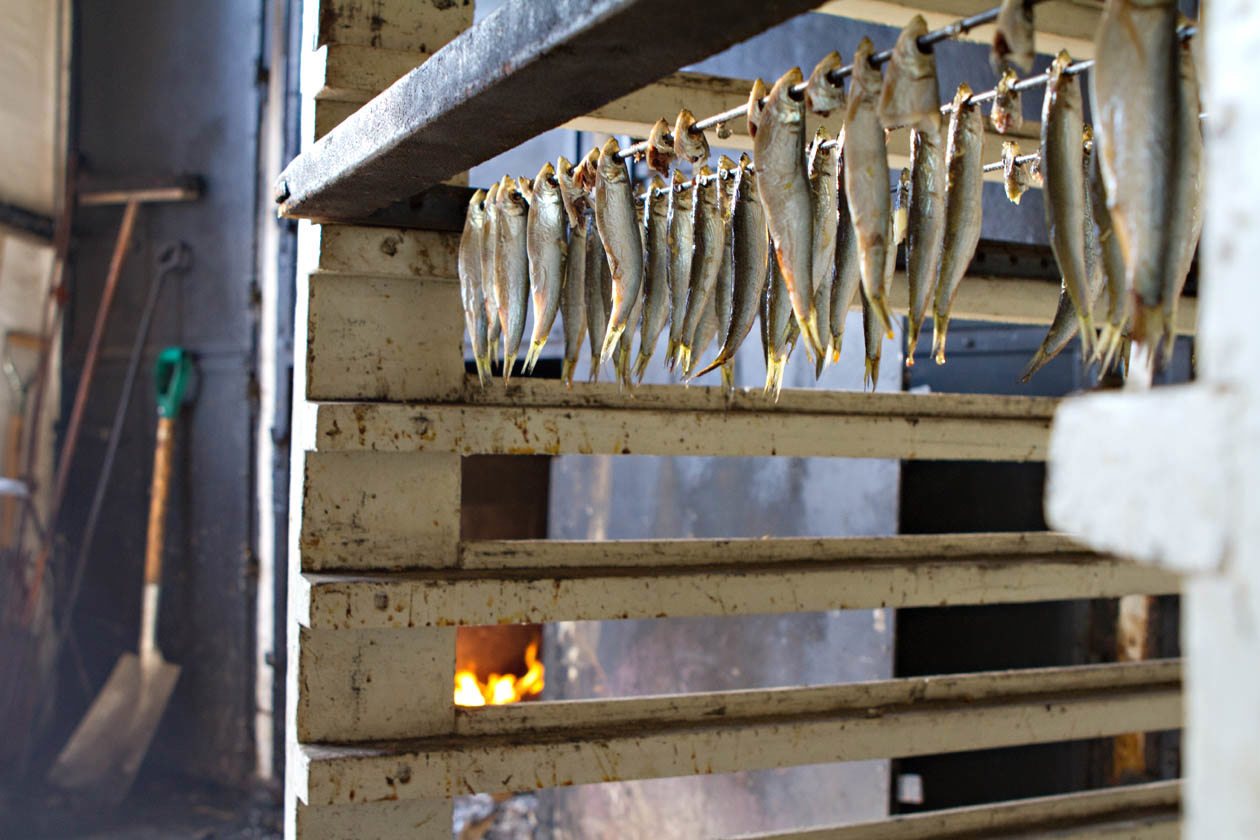
The Norwegian Canning Museum, Stavanger. Photo: Credits: © Kaitlin Bailey / Matador Network / www.fjordnorway.com Copyright: Fjord Norway
Also worth a visit is the Stavanger Art Museum, which offers a collection of prestigious Norwegian art spanning from the 19th century to contemporary art. Meanwhile, for those interested in understanding how offshore operations have become Norway's most important industry, a visit to the Norwegian Petroleum Museum on the harbor waterfront offers insight into the formation of oil and gas beneath the seabed to drilling. Indeed, it was in the North Sea, in 1969, that oil was discovered, and since then, the Stavanger region has played a fundamental role in the Norwegian economy.

Norwegian Petroleum Museum. Photo: Copyright © Sisterscom.com / Depositphotos
Stavanger and its region are also famous for their majestic nature with fjords, white beaches, and stunning cliffs. In addition to cruising the fjord from Stavanger, two famous attractions not to be missed in the Stavanger region are Sola beach and Preikestolen, the panoramic Pulpit Rock, an iconic rock formation 604 meters above Lysefjord, a sheer cliff offering breathtaking views amidst nature.
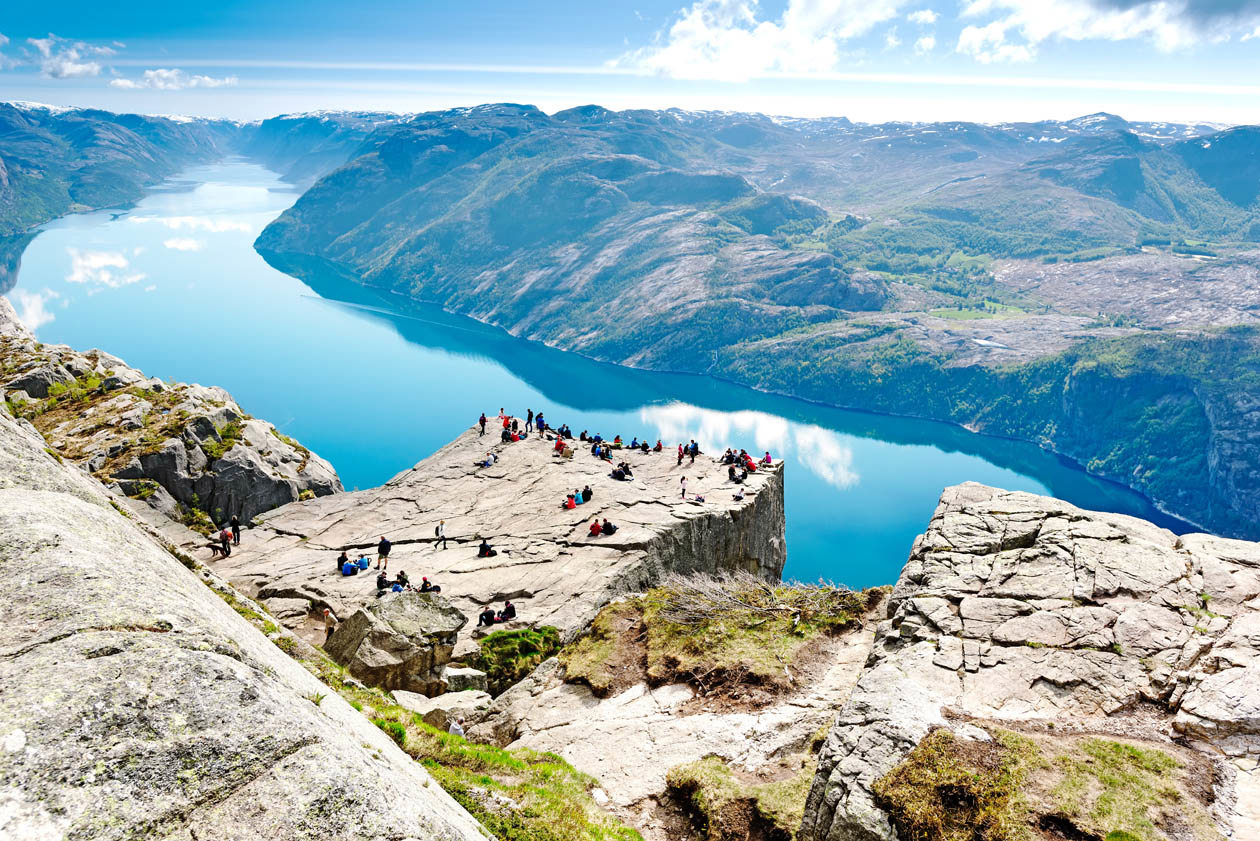
Pulpit Rock. Photo: Copyright © Sisterscom.com / Depositphotos
Hafrsfjord, in the municipalities of Stavanger and Sola, is a fjord approximately 9 kilometers long and is a so-called threshold fjord with four thresholds, deeper only at the end of the fjord (3.5 meters, where boats cannot navigate). The fjord can be crossed to the north on the Hafrsfjord Bridge or by car.

Hafrsfjord Bridge. Photo: Copyright © Sisterscom.com / Depositphotos
Hafrsfjord is also home to a particular monument of Stavanger: Sverd i fjell (Swords in the rock), consisting of three swords symbolizing peace, unity, and freedom, created by Fritz Røed (1928-2002) and inaugurated by King Olav in 1983. Meanwhile, the entire area around Hafrsfjord is also rich in prehistoric artifacts: a Bronze Age petroglyph site (around 1800-500 BC) at Fluberget and Hestnes, and bronze lur at Revheimsmyra.

Sverd i fjell. Photo: Copyright © Sisterscom.com / Depositphotos
Hafrsfjord is a recreational area with meadows, beaches, a cycle path, a pedestrian path along the fjord, and the Møllebukta bathing area crossed by a stream from Lake Store Stokkavatn, and nearby is also the famous hiking area Sørmarka.

Sword in the mountains. Photo: Credits: Sven-Erik Knoff | FotoKnoff | www.fotoknoff.no | Region Stavanger. Copyright: Region Stavanger
A true natural paradise for nature lovers who can venture to eight inhabited green islands belonging to the municipality of Stavanger: Rennesøy, Mosterøy, Bru, Fjøløy, Klosterøy (home to the medieval Utstein Monastery), Vestre Åmøy, Sokn, and Brimse. For those renting a car, driving from Stavanger to the Ryfylke islands via the Rennfast tunnels, as well as from Stavanger to Solbakk via the Ryfast tunnels, is possible. Even with speedboats from the city center, one can reach the surrounding islands and the mainland of Ryfylke, while daily ferries depart from Stavanger for excursions to Bergen and Denmark from Risavika.

Utstein Monastery. Photo: Credits: Monica Larsen / regionstavanger.com Copyright: Region Stavange
Before leaving the city, shopping in the historic center with its many galleries and craft boutiques or stopping to taste typical Norwegian cuisine in various typical, innovative, or Michelin-starred restaurants, as well as along the Stavanger waterfront or in Øvre Holmegate, called Fargegaten (the street of colors), a lively pedestrian area with niche shops, cafes, bars, pubs, and restaurants.
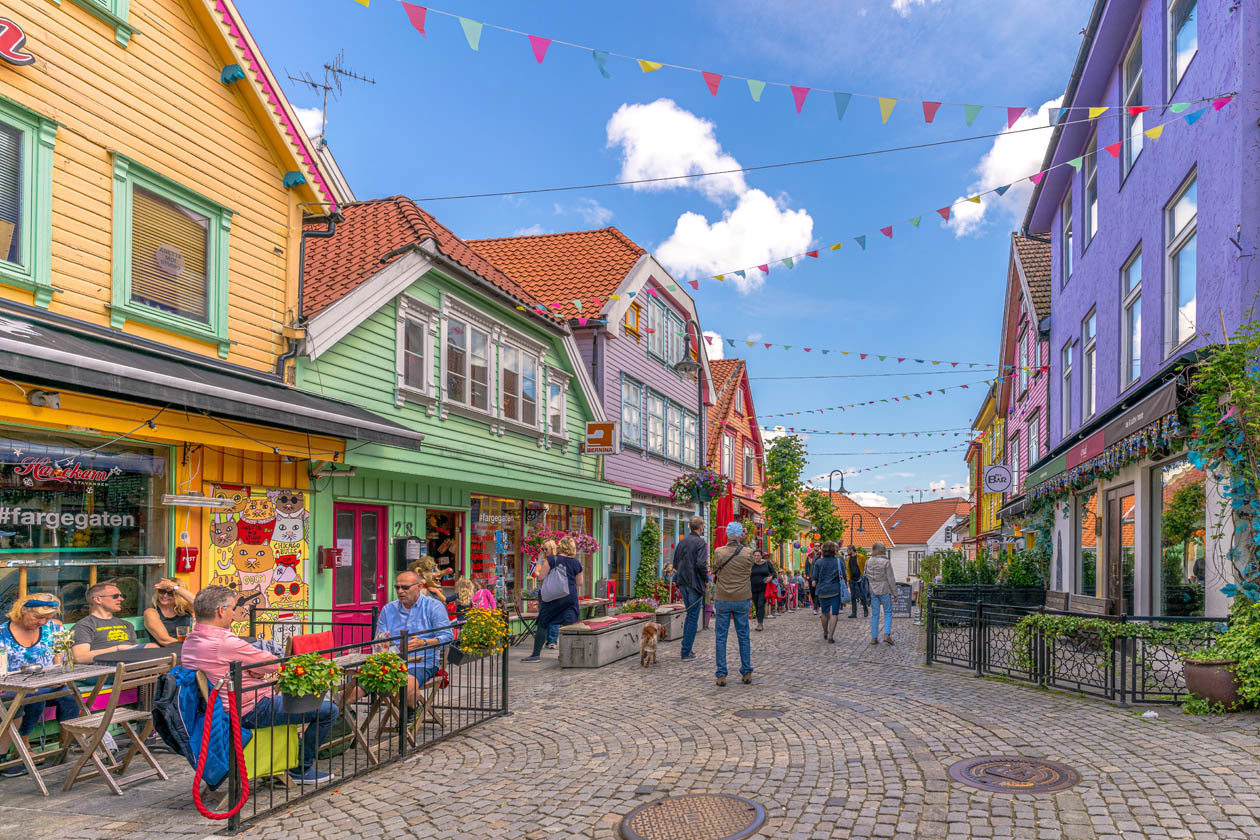
Fargegata/ The colourful street. Photo: Credits: Brian Tallman Photography Copyright: Region Stavanger
In Stavanger and its region, dishes are prepared with locally sourced ingredients: fish (haddock, plaice, black cod, and hake) and seafood (such as langoustines and scallops) from the North Sea, cheeses, game, sweet tomatoes, mushrooms, and vegetables from the countryside.

Bacalao Photo: Copyright © Sisterscom.com / Depositphotos

Kjøttkaker Photo: Copyright © Sisterscom.com / Depositphotos


Topinambur and carrots Photo: Copyright © Sisterscom.com / Depositphotos

Lapper Photo: Copyright © Sisterscom.com / Depositphotos

Absolutely to be tasted are the famous herring, fish soups, lutefisk (dried codfish), bacalao (Norwegian cod), komler (potato dumplings served with salted meat), kjøttkaker (meatballs), fårikål (lamb stew), karamellpudding (caramel pudding), lapper (thick pancakes to be paired with jams and fruits). Among the vegetarian options are exquisite dishes like spicy potato stew, strawberry and rhubarb salad, Jerusalem artichoke and carrot soup, and rømmegrøt (sour cream porridge).
Texts by Nicole Villa
Avion Tourism Magazine
Photos: Copyright © Region Stavanger / Credits: below the photos.
Photos: Copyright © Sisterscom.com / Depositphotos
All rights reserved Copyright © Sisterscom.com
Video: Copyright © visitnorway.it
Video: Copyright © visitnorway.it
Tourism Board
visitnorway.it / fjordnorway.com
Partnership with Booking.com
Where to sleep in Stavanger
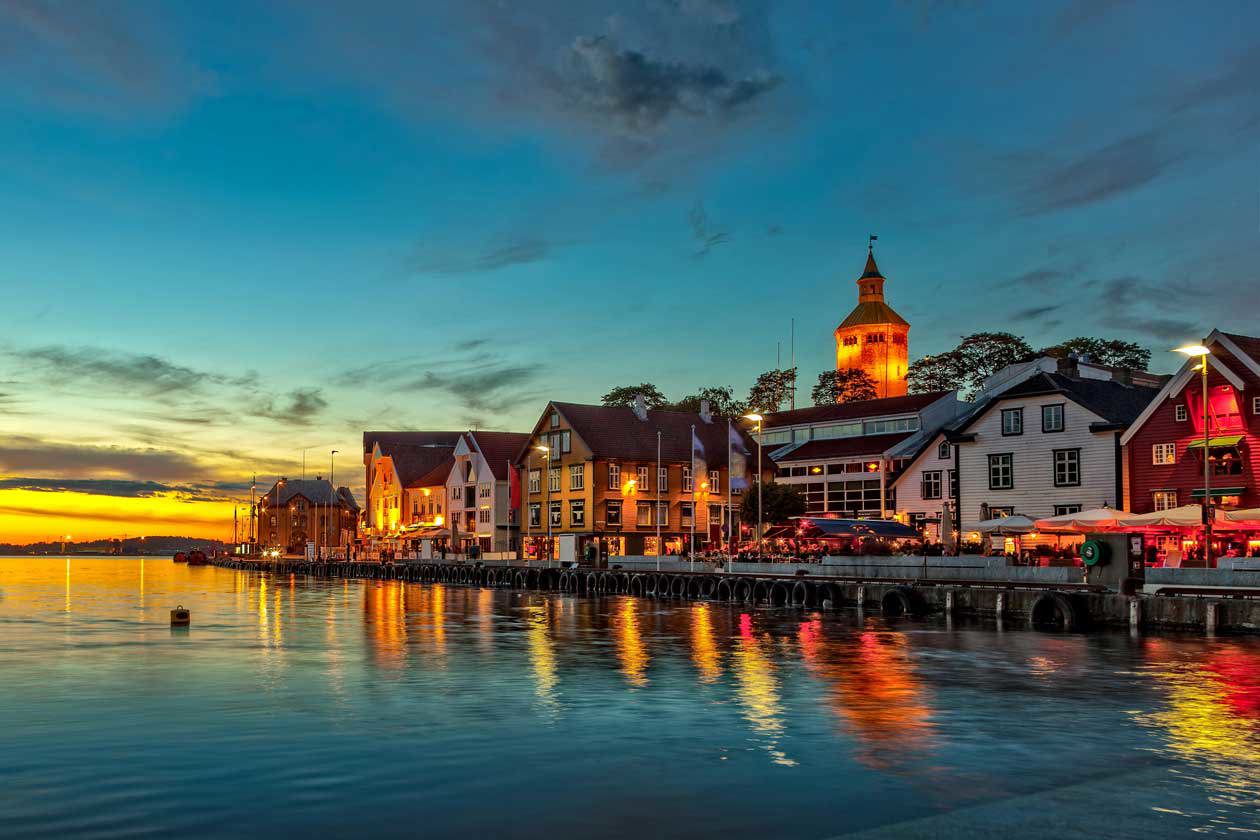
Stavanger. Copyright © Sisterscom.com / Depositphotos
Stavanger is a welcoming city and offers different possibilities for accommodation.
To find the ideal hotel and the best offers you can do a search for the stars but also for districts or landmarks.
HOUSES, RESORTS, B&B
Stays in houses, resorts, B&Bs and hostels:
PLACES OF INTEREST
Hotels in tourist areas
Hotels in the region
AIRPORT
Hotels near the airport
WHERE TO GO IN STAVANGER
Tourist attractions in Stavanger
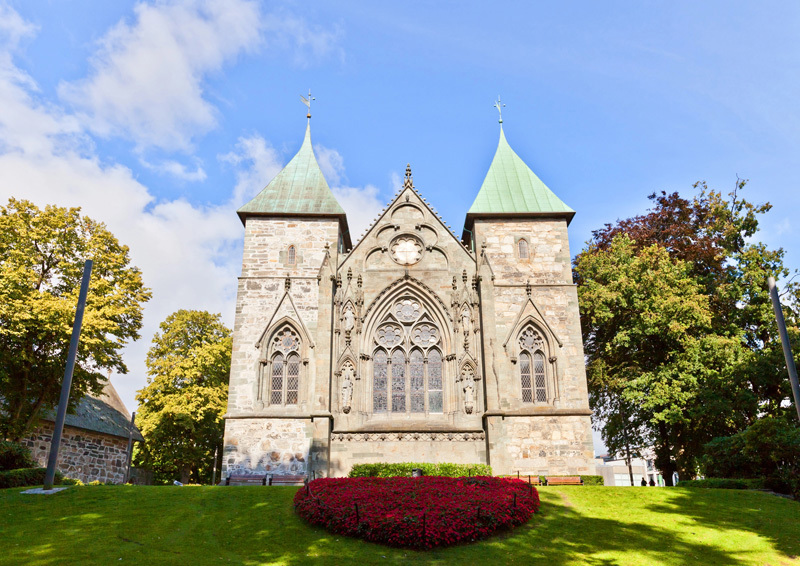
Stavanger Cathedral. Photo: Copyright © Sisterscom.com / Depositphotos
Stavanger Cathedral
Stavanger Cathedral is located a short walk from the port of Stavanger and has preserved its original structure since the Middle Ages, making it unique in Norway. Its construction in Anglo-Norman style is presumed to date back to 1125, commissioned by Bishop Reinald of Winchester. After being damaged by a fire in 1272, it was rebuilt with a new Gothic-style choir. Notable features include the pulpit crafted by Andrew Smith in 1650, the stained glass windows by Victor Sparre from 1957, and in the sacristy, a mural tapestry depicting the patron saint Saint Olaf by Frida Hansen. The church's patron saint is Saint Swithun.
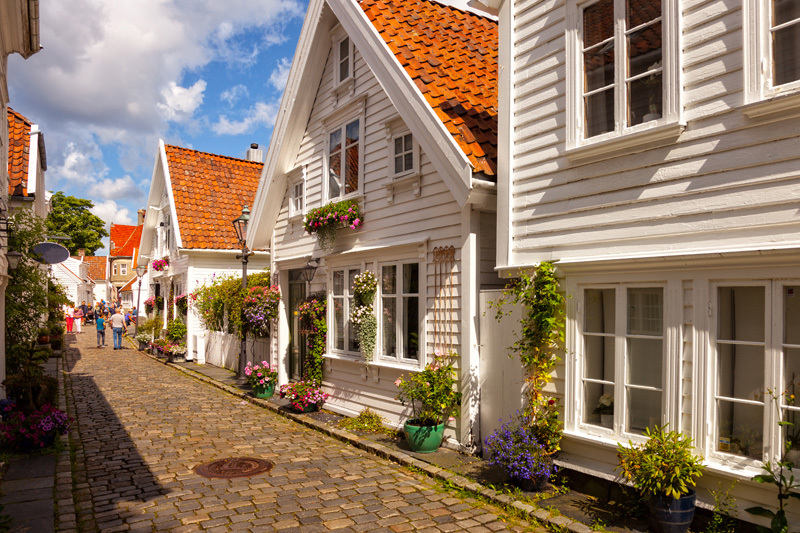
Old stavanger. Photo: Copyright © Sisterscom.com / Depositphotos
Old Town of Stavanger
The Old Stavanger, situated on the western side of Vågen in the city center, boasts 173 historic wooden buildings dating back to the early 18th century, mostly comprising picturesque white cottages. In addition to the old town center, Stavanger's wooden urban landscape includes approximately 8,000 residences spanning various architectural styles, from Empire to Art Nouveau to Functionalism. These wooden houses primarily originate from Stavanger settlements predating World War II. Within the Old Stavanger, visitors can explore art galleries, craft boutiques, the Stavanger Maritime Museum, and the IDDIS (Norwegian Printing Museum and Norwegian Canning Museum). Recognized by UNESCO, this area is considered one of the Norwegian cities to be preserved.

Fargegata/ The colourful street. Credits: Brian Tallman Photography Copyright: Region Stavanger
Øvre Holmegate
Øvre Holmegate stands out as one of the main attractions of Stavanger, renowned for being the city's colorful pedestrian street, originating from an original idea by hairdresser Tom Kjørsvik. Artist Craig Flannagan has contributed to its vibrancy by painting the facades of houses with bright colors, earning it the nickname "Fargegata" among locals, which means "Street of Colors". Along this street, visitors can find numerous establishments including cafes, bars, and pubs offering local beer, fashion boutiques, a tailor's workshop, a hair salon, a barber shop, and a tattoo parlor.
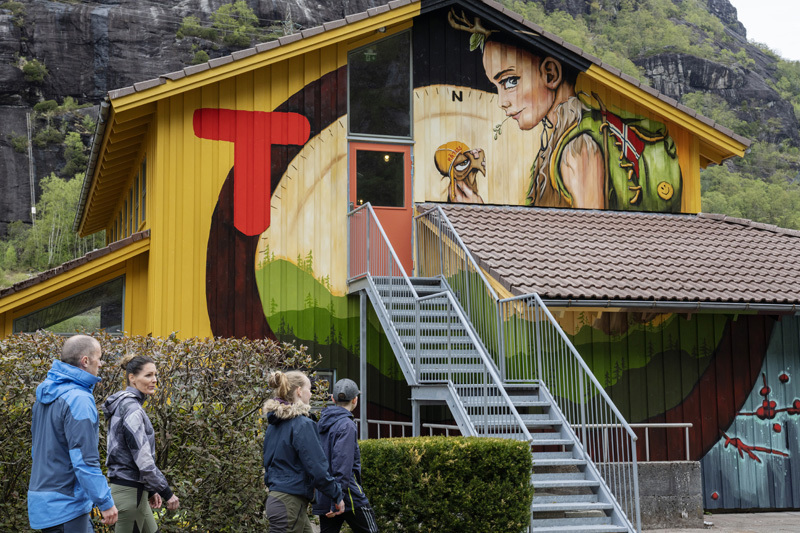
Sreet art in Lysebotn. Credits: Photo © Marie von Krogh / Winter film / Ut i Sandnes. Copyright: Ut i Sandnes / Region Stavanger
Street art in Stavanger
Stavanger is a true paradise for street art enthusiasts, with numerous walls adorned with works by internationally renowned and local professional artists. Among these stands out Pøbel, one of the most renowned Norwegian street artists globally. The street art scene in Stavanger is concentrated in an easily walkable area, just 10 minutes away. The famous NuArt street art festival has animated the city for over 15 years, helping to make Stavanger a must-visit destination for enthusiasts of this art form.
Museums in Stavanger
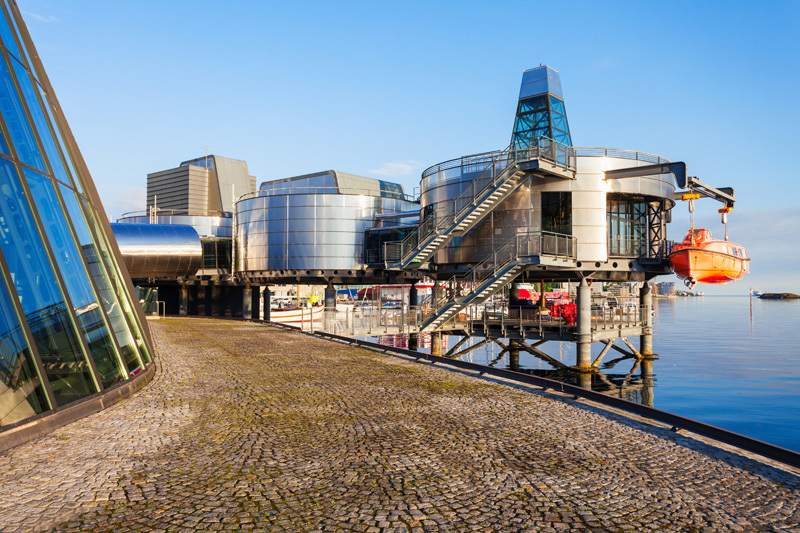
Norwegian Petroleum Museum. Photo: Copyright © Sisterscom.com / Depositphotos
Norwegian Petroleum Museum
At the Norwegian Petroleum Museum, visitors can explore the evolution of the Norwegian offshore industry. The exhibitions provide a comprehensive overview of how oil and gas are formed, the extraction of resources from the seabed, as well as drilling and production processes. The museum also addresses the climate challenge arising from greenhouse gas emissions and global warming. In addition to this, various activities are available designed for both children and adults, including interactive installations, film screenings, and a themed shop.

Stavanger Art Museum. Photo: Credits: Terje Rakke/Nordic Life 2011 Copyright:Region Stavanger BA
Stavanger Art Museum
Stavanger Art Museum houses a rich collection ranging from 19th-century Norwegian art to contemporary art. Among the most significant works are paintings by landscape artist Lars Hertervig (1830-1902), originally from Tysvær near Stavanger, known for his romantic landscapes. Additionally, the museum hosts the prestigious Hafsten Collection, featuring works by mid-20th-century painters. Located in the picturesque park surrounding Lake Mosvatnet, the museum is just 3 km from the city center.
Excursions in Stavanger
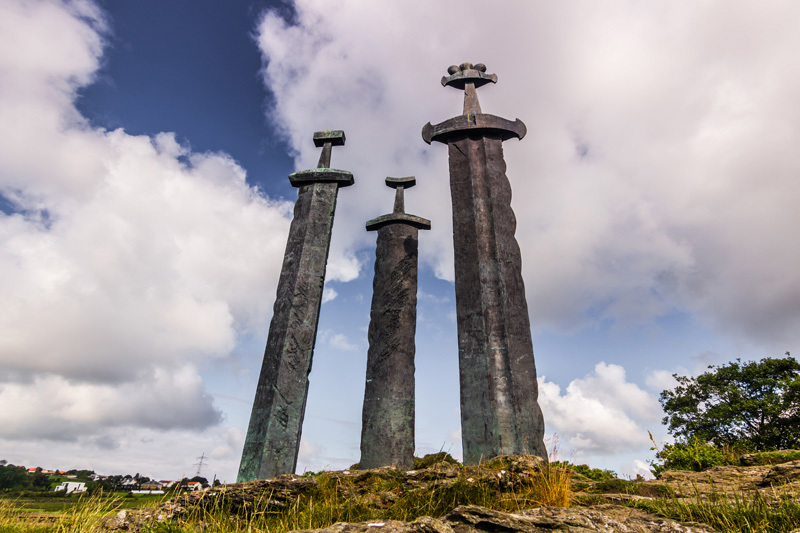
Sverd i fjell. Photo: Copyright © Sisterscom.com / Depositphotos
Sverd i fjell (Swords in the Rock)
The Swords in the Rock monument in Hafrsfjord, located in the territories of Stavanger and Sola, commemorates the historic Viking battle of Hafrsfjord, which took place in 872, when Norway was united under a single kingdom by Harald Fairhair. This monument, composed of three imposing swords, symbolizes fundamental values such as peace, unity, and freedom. The handles of the Viking swords were crafted using artifacts found in various regions of the country. Created by artist Fritz Røed (1928-2002), the monument was inaugurated by King Olav in 1983. To reach it, one can cross the fjord to the north via the Hafrsfjord Bridge or drive to the site.

Preikestolen. Photo: Copyright © Sisterscom.com / Depositphotos
Preikestolen (Pulpit Rock)
Preikestolen, also known as the Pulpit Rock, is a spectacular rock formation standing 604 meters above the Lysefjord, and it is one of Norway's most famous hikes. The eight-kilometer trail starts from the Preikestolen fjellstue lodge and takes about four hours, offering a moderately challenging experience. This rock can also be admired from the fjord (by booking a cruise), while accommodation options include the Preikestolen Fjellstue and the Lilland Hotel. The hiking season runs from May to October, but Preikestolen can be visited year-round with appropriate gear.
Partnership with GetYourGuide
Tours and excursions
Shopping
You might be interested in
Destinations found in the vicinity
Other destinations
Airports nearby Stavanger





